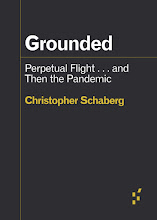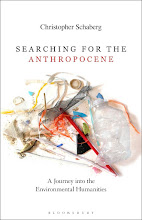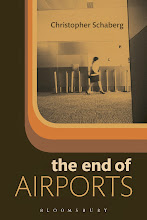Wednesday, August 13, 2008
Virtual problems
Sue Halpern’s article on “Virtual Iraq” (May 19, 2008) provided a curious look at how new media forms are being employed for P.T.S.D. therapy. One wonders, though, about the political implications of technologies that translate the real violence of warfare into an abstracted “game” of sorts. It is obviously important to help veterans with P.T.S.D. recover from their experiences and to be able to cope with everyday life; yet what happens, in the long term, when the wounds of war can be so effectively and efficiently treated by immersion in a virtual realm? It sounds eerily like a rationale for the continuation of an unwinnable war. Rather than address the root causes of today’s combat-inflicted P.T.S.D.—namely, chaotic battle conditions in which “civilians” and “insurgents” are easily mistaken, and there is no clear sense of what a “mission accomplished” would ever look like—Virtual Iraq threatens to normalize (and even trivialize) the consequences of a terribly chosen war. In short, Virtual Reality therapy does not simply make reality easier to bear; it also makes certain realities—such as preemptive war and excessive oil consumption—merely virtual problems.
The limits of the spectacle
Anthony Lane, in his June 25, 2007 review of “A Mighty Heart,” writes “Only once does Mariane [Pearl] crack. Informed of her husband’s death and of its savage circumstances, she goes to her room, crouches over, and keens.” This is a significant misreading of that moment in the film. In fact, Angelina Jolie’s Mariane screams over her husband’s death before she learns the specifics of his execution. Afterward, when Mariane is told about the video of the beheading, she simply insists that she never wants to see it. This sequencing is key to the film, which, in its own vexed way, critiques spectacular uses of violence in a global-technological age: the fact that killings, missile strikes, and torture can be recorded and screened does not make their realities any easier to navigate. The paradox emerges at the point where we are supposed to feel, through Jolie’s cinematic performance of Mariane, that the felt consequences of violence are always beyond the limits of the spectacle.
Stay sharp, Obama!
In Larissa MacFarquhar’s profile on Barack Obama (“The Conciliator” May 7, 2007), the presidential candidate is reported as saying: “There are universal values I will fight for. I think there may have been a time and a place in which genital mutilation was culturally appropriate, but those times are over. I’m not somebody who believes that our foreign policy has to be driven by moral relativism. What I do believe is that we have to apply judgment and a sense of proportion to how change happens in any society—to promote our ideals and our values with some sense of humility.” These sentences undermine one another in troubling ways. First, “universal values” would necessarily travel across time and space; that’s what would make them universal. To accept genital mutilation as a historical and cultural phenomenon, then, would be to critique the very logic of “universal values.” “Moral relativism” has become a cliché often deployed by the right to lambast precisely the “humility” which Obama later advocates. The problem here is that even though moral relativism is a fraught term itself (morality and relativity are two utterly distinct ways of understanding the world), Obama essentially accepts this contradictory stance in the previous two sentences: he claims to support universal values, but also concedes that time and place make such values culturally acceptable—or not. While I deeply respect and agree with Obama’s pleas for “humility,” “proportion,” and an understanding of societal “change,” I am nervous that his invocations of “universal values,” “ideals,” “judgment,” and the scarecrow of “moral relativism” threaten to compromise his status of a fresh political persona; this language sounds eerily similar to the confused, lofty, and inapplicable rhetoric that we have become all too familiar with over the past eight years.
On language and the philosophy of mind
I was struck by the way that Larissa MacFarquhar finesses a delicate strategy in her piece on Pat and Paul Churchland (“Two Heads” Feb. 12, 2007). Her article thoroughly explains how these two philosophers of mind are working to complicate (and ultimately do away with) the linkages between language and thought; in other words, MacFarquhar effectively uses language to describe how we might begin to imagine a world without language. The Churchlands’ wish to get beyond language is rather puzzling, especially given their own adoption of more sophisticated and nuanced language in their day-to-day lives. Collaborative writing practices also seem to reflect the sort of brain-sharing that interests the Churchlands: one often reads accounts of collaboration in which co-authors finish each other’s sentences or anticipate one another’s thoughts. For that matter, aren’t all serious engagements with what we call ‘literature’ instances of ‘brain joining’, however mediated or incomplete? In fact, isn’t this precisely the reason why The New Yorker devotes impressive (and, frankly, expensive) amounts of empty space to the margins of its poetry selections? These spaces make room for readers to enact a brush against another brain, to inhabit the perceptual processes of another human. One can accept language as a “minor phenomenon,” and yet still spend a lifetime expanding one’s mind with words.
Tuesday, August 12, 2008
Green Values
Elizabeth Kolbert’s article on Amory Lovins (“Mr. Green” Jan. 22, 2007) exposes a vexing problem at the core of contemporary environmentalism. Lovins offers example after example of ecologically savvy solutions, by shrewdly linking energy conservation with the charms of free-market economics. Then, towards the end of the article, Lovins unconvincingly invokes the phrases ‘moral’, ‘spiritual’, and ‘higher purpose’ in order to explain why people will not simply consume more resources once energy can be produced and consumed more efficiently: “Every faith tradition that I know decries materialism.” Lovins then quotes the first two lines of Wallace Stevens’s poem “The Well Dressed Man with a Beard”: “After the final no there comes a yes / And on that yes the future world depends.” Importantly, though, Stevens is playing off of Nietzsche’s insistence that the ‘no’s of the world are precisely spiritual and theological in nature: so-called ‘higher purpose’ is often an excuse for not taking lower, earthly matters more seriously. Thus, to be truly environmental, humans must say ‘yes’ to the material world—in all its complexity—before enduring positive changes can be enacted. Kolbert’s article shows that as long as environmentalists defer to metaphysical justifications for human behavior, true ecological awareness will be endlessly deferred.
Post-secularism in the flesh
Rebecca Mead’s astute review “Proud Flesh” (Nov. 13, 2006) raises complex philosophical questions related to this contemporary medical niche. Cosmetic surgery indeed serves quasi-religious functions, but it seems not so concerned with “the notion of human perfectibility” as much as with the idea of infinite deferral: there will always be another possible surgery, a next procedure to undergo. In this way, the cult of cosmetic surgery is a decisively post-secular phenomenon. The cultural trend appears to rely on faith, and yet there is no transcendent object of worship; even the physical body, as Mead aptly notes, is emptied of any final value. What one desires is an experience of endless permutation—never any calculable progress. If we translate this attitude over to the political realm, we can begin to comprehend the comportment of individuals who call for revolutionary change, but, to echo St. Augustine, “not just yet!”
Self-help without the self
Nick Paumgarten’s fascinating article on Robert Greene (“Fresh Prince” Nov. 11, 2006) seems to forward an implicit critique of the self-help craze. What one gains in power, money, success, and fame is often at the expense of one’s actual ‘self’. Thus Greene’s persona slips in and out of focus throughout the article, never fully materializing as a human being to whom readers might in fact relate. Who is Robert Greene? For some, he is a mystic scribe; for others, a savvy business consultant; for others still, he is nothing less than a god. This brings to mind Marx’s observation in Capital: “A commodity appears, at first sight, a very trivial thing, and easily understood. Its analysis shows that it is, in reality, a very queer thing, abounding in metaphysical subtleties and theological niceties” (Capital, Vol. One, Sect. 4). Robert Greene is first and foremost a commodity: he is consumed in an already intact web of social relations and abstracted value. There are no ‘selves’ to help here; the consistent face of capital does not require personality.
String Theory: Postmodern, or Romantic?
Jim Holt’s compelling article on string theory (Oct. 2, 2006) turns on a complicated question: “Is physics, then, going postmodern?” Holt follows up this query by invoking John Keats’s 1819 poem “Ode on a Grecian Urn” which ends with the tautological puzzle, “‘Beauty is truth, truth beauty,’ — that is all / Ye know on earth, and all ye need to know.” Importantly, though, Keats was not a “postmodern” poet; he was a Romantic. Strictly speaking, postmodernism has very little serious interest in considerations of objective beauty or unification. One wonders if Holt is in fact trying to suggest that physics, via string theory, is going Romantic in its expansively enumerated attempts to articulate a final, unifying theory. If so, Holt might have illuminated the current state of string theory with the words of another Romantic poet, Byron: “What is the end of fame? ‘t is but to fill / A certain portion of uncertain paper” (Don Juan: Canto the First, lines 1736-1737).
Letters to the Editor
One of the practical ways that I use literature is to inflect my weekly perusal of The New Yorker. I receive a subscription of The New Yorker every year as a gift, and in this magazine I often find articles that I use in the classroom. Sometimes, I write letters to the editor. Since most of them have not been published, I have decided to 'publish' them here, in the virtual pages of my "What is literature?" blog. Following this post, then, I will occasionally post my letters to the editor of The New Yorker, each of which takes its cue from a literary theoretical point of interest. Literature both appears in the non-literary, and can be used to respond to and complicate the non-literary. Literature, in other words, is an ornament and a tool for disassembling ornamentation.
The reason that I am 'publishing' my own letters here is that as a humanities scholar and instructor, there is simply so much writing that one does that goes unread. One of the reasons that I experimented with a paperless writing class facilitated through blogs was to give more of my intellectual labor more of a public audience—my comments to individual students were always available to all students (not to mention public readers), thus expanding the number of potential readers of my critical writing. Then there is the peer review process, which takes a long time for turn around, and sometimes this does not even result in comments or feedback. It seems to me that blogs can be used to make our intellectual labor more public—particularly the work that will almost certainly go unread, otherwise. These letters to the editor took time, and were written according to certain genre conventions that are both nuanced and tacit. Furthermore, these letters reflect trajectories of thought that are not necessarily apparent in my more formal academic prose.
The reason that I am 'publishing' my own letters here is that as a humanities scholar and instructor, there is simply so much writing that one does that goes unread. One of the reasons that I experimented with a paperless writing class facilitated through blogs was to give more of my intellectual labor more of a public audience—my comments to individual students were always available to all students (not to mention public readers), thus expanding the number of potential readers of my critical writing. Then there is the peer review process, which takes a long time for turn around, and sometimes this does not even result in comments or feedback. It seems to me that blogs can be used to make our intellectual labor more public—particularly the work that will almost certainly go unread, otherwise. These letters to the editor took time, and were written according to certain genre conventions that are both nuanced and tacit. Furthermore, these letters reflect trajectories of thought that are not necessarily apparent in my more formal academic prose.
Subscribe to:
Posts (Atom)













